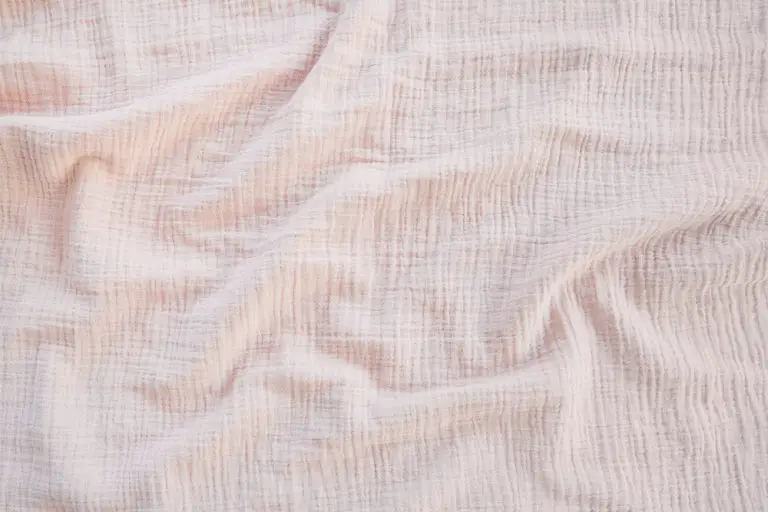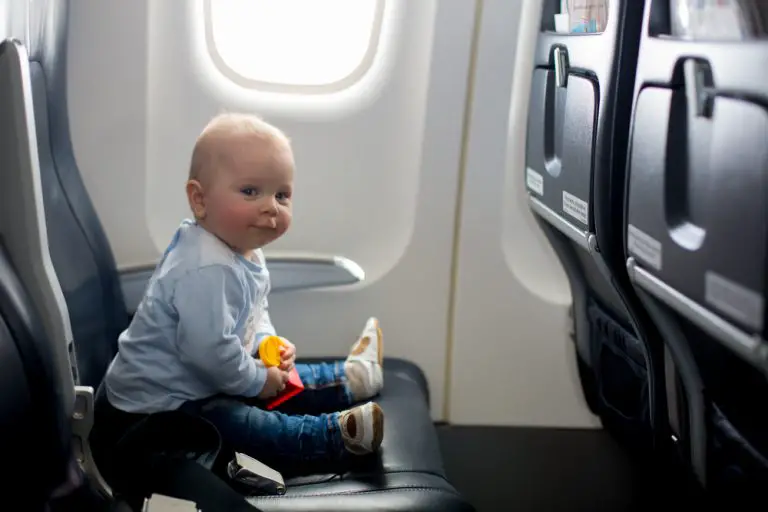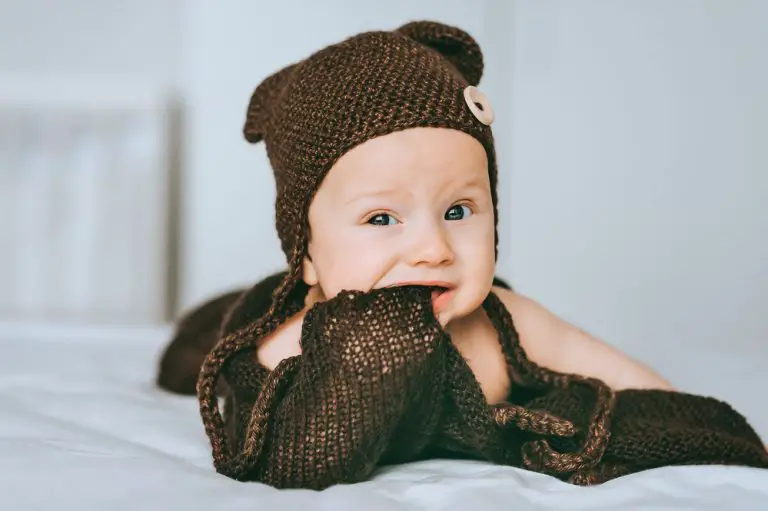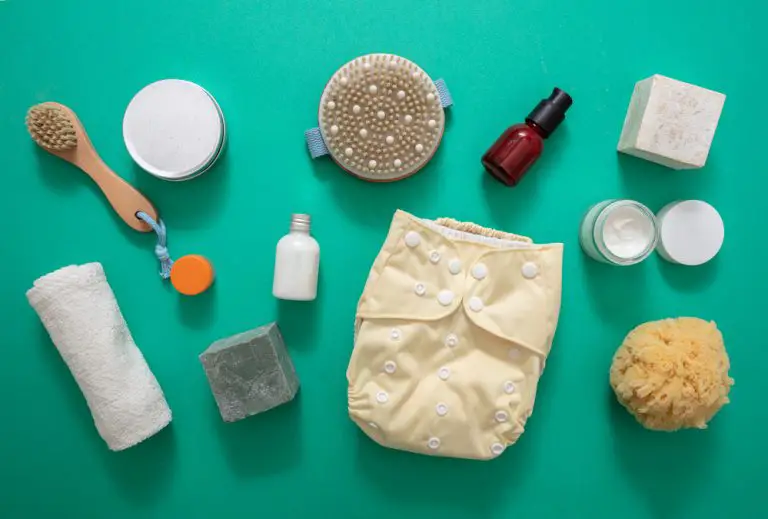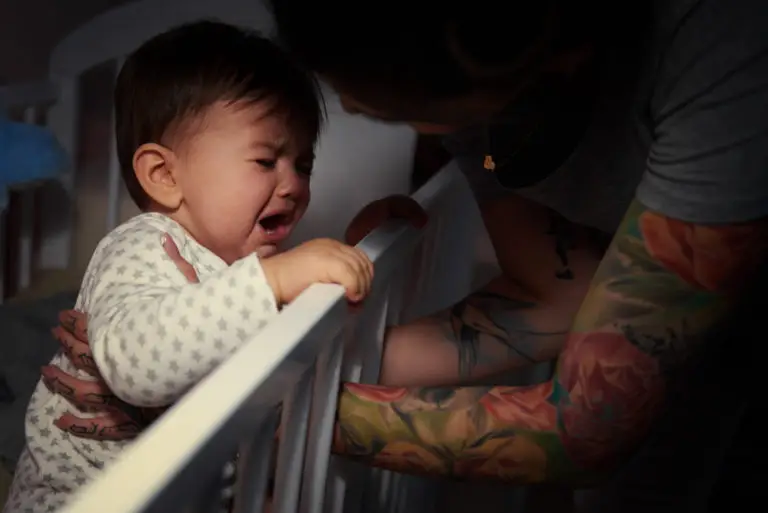History of Diapers: The FULL Timeline (2024)
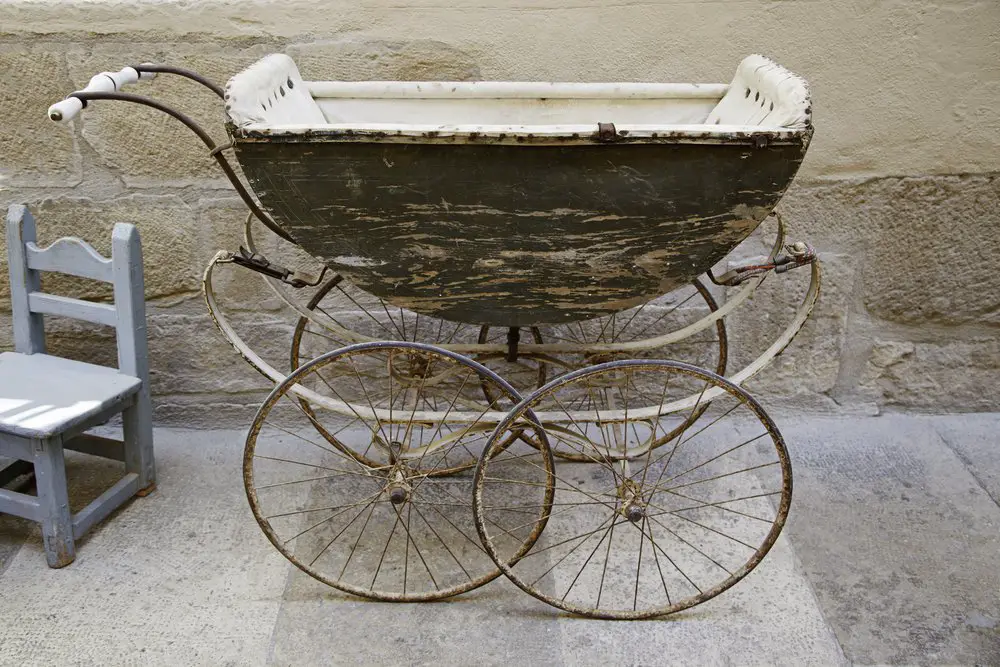
If you are like many parents, the history of diapers has probably never crossed your mind until you started using them. It is an interesting question; at what point did humans begin using a cloth to catch out baby’s waste and why?
Historically we can see examples of diapering methods around the world. However, in many warmer climates like Africa, children did not wear diapers and instead wore beaded coverings for modesty and to protect genitalia. (1)
The advent of the disposable diaper in the 1940s changed the game worldwide, making diapering easier and more sanitary.
- History of Diapers Timeline
- History of Pre-diaper Era
- History of Cloth Diapers
- History of Disposable Diapers
History of Diapers Timeline
There is no simple history of the diaper’s timeline because different cultures and people in different climates and parts of the world each followed their own trajectory. However, we can look at a basic outline from the early diaper invention to the invention of the first disposable diapers.
- Ancient Diapers were made up of the natural materials available in the area. Native American diapers consisted of grass and rabbit skin. In many warmer climates, baby’s wore nothing on their bottoms!
- Elizabethan Era – Babies and toddlers were either bound in tight cloth or wore long gowns with nothing underneath, allowing them to go where and when they needed.
- The early 1800s – In Europe and most of the industrialized world, people began using cloth strategically warped and tightened around their babies to protect furniture and belongings.
- The late 1800s – Safety pins were used in an attempt to secure pieces of fabric, but they were faulty, and the fabric often leaked.
- The early 1900s – Home diapering became much more popular. Tightly woven cloth was often used with ill-fitting plastic pants. The bins these old diapers were kept in often smelled and were full of bacteria.
- The 1942 – Paulistróm in Sweden is credited with creating the first disposable diaper.
- 1946 – Marion Donovan creates the first plastic cover for disposable diapers.
- 1948 – Johnson & Johnson is the first company to sell disposable diapers.
- 1961 – Proctor and Gamble change diaper history by releasing Pampers. Vic Mills is the diaper inventor who came up with the concept when designing something comfortable for his grandson.
- The 1970s – LAteral tape that could be opened and closed several times was added to disposable diapers.
- 1978 – Huggies became available to the public. The shape of the disposable was now the modern hourglass shape we are used to seeing.
- The early 1990s – Cloth diapers began making a comeback. Motherease began selling cloth diapers in the U.S. and Canada.
- 1997 – The site BornToLove was launched by Catherine McDiarmid, selling cloth diapers and cloth diaper accessories.
- The early 2000s – The launch of several cloth diaper companies occurred, including Fuzzi Bunz, Staccinator, Heavenly Heiny’s, Honeyboys, and Cuddlebuns.
- 2006 – The bumGenius diaper was invented, changing the history of cloth diapers due to its modern design and ease of use.
- 2014 – Diaper Diamond introduced the Diaper Sprayer, adding a new word to the diaper etymology and making cleaning poopy cloth diapers even easier.
- The mid to late 2010’s – Companies begin introducing biodegradable disposable diapers made from products such as bamboo.
History of Pre-Diaper Era
Before diapers, human ancestors were similar to apes, and no clothing or diapering was used or worn.
However, anthropologists know that as early humans evolved into conscious thinking beings covering the genitalia became the norm in many cultures. (2) Ancient diapers consisted of peat moss and grasses placed into animal skins and cloth to absorb urine.
In Japan, parents used old kimonos that were fashioned into diapers, and in China, young children had slits made in their underpants and shorts to allow them to go as needed.
In many rural parts of China, mothers held their baby’s while breastfeeding, and then they felt their baby was about to go to the bathroom held them over a bucket.
The Industrial Revolution in England changed the history of the diaper as families finally had money to own furniture and other personal things and did not want their baby’s soiling them.
Elimination Communication
In many cultures worldwide, before diapers were used, mothers used what is known as elimination communication.
Mothers would look for signs and signals that their child needed to go and would hold them over a bucket or out in the street while they eliminated their waste.
Parents would also use a series of whistles and hisses to communicate with their child, much like many western parents teach their young baby’s sign language to understand when they needed to go.
This method was still used quite frequently in China, particularly in rural areas and their split-pant method. (3) Toddlers wear pants that have slits in them that allow them to crouch down and go without the need for a diaper.
Bare Bottoms
Many cultures who live in warmer parts of the world did not, and do not, even use diapers. Instead, they allow their baby’s bottoms to be free.
Some people may opt to use coverings or fabric for modesty to cover their child’s genitalia, but nothing obstructs the bottom.
We see a similar approach in some western cultures with the bare bottom potty-training method.
One approach of modern potty training says to let your child walk around pantless and diaperless so less stands in the way between them and the potty.
The bare bottom approach also keeps things cleaner as babies aren’t sitting in their own waste or urine, so there is no worry about diaper rash!
Swaddling
The closest thing to medieval diapers was swaddling. You could even go out on a limb and say swaddling was the first cloth diaper!
Swaddling was believed to help an infant’s legs and arms grow straight, but it also immobilized them and kept them stuck in one spot.
Swaddles were changed throughout the day to clean the baby and allow the baby some freedom of movement.
However, many medieval European infants and toddlers were kept swaddled or at least in their cribs for much of their first year or two.
The alternative to swaddling when it came to diapers in England and Europe was to allow toddlers to walk around in long gowns with nothing underneath, allowing them to go where and when they needed.
History of Cloth Diapers
You could say the original cloth diapers were invented by ancient cultures who used natural materials and animal skins to create receptacles for baby waste. But if we look at a modern diaper’s definition, cloth diapers began making their first appearances in the early 1800s.
The industrial revolution created disposable income for many, and people now wanted to protect their furniture and other personal belongings from being soiled by a baby’s bottom. So women began wrapping old pieces of fabric and cloth around their babies.
In the late 1800s, safety pins had been invented and the first cloth diapers that resembled something we would recognize today emerged. However, safety pins were dangerous as they could prick babies, and infections could occur from leaking diapers.
In 1887 Maria Allen created the first mass-produced cloth diaper. The word diaper refers to the fabric pattern initially used to create them; it refers to white linen or cotton fabric with a small, repetitive pattern of geometric shapes.
The First Cloth Diaper
Maria Allen first mass-produced diapers in the United States in 1887. The first cloth diapers were squares or rectangles of fabric that were folded around the baby.
People were beginning to understand the concept of germs and that dirty diapers held bacteria that could make you sick.
People would ash cloth diapers in steel pots with boiling water and hang them out in the sun to air dry.
By the time WWII rolled around, many mothers were using diaper services and would have fresh diapers delivered daily alongside their milk and eggs.
The Evolution of Cloth Diapers
Around 1910 the rubber pant was invented to place over the cloth diaper to keep wetness from leaking. In the 1930s, parents also used wool pants or doubled up on diapers to prevent leaks.
Unfortunately, these methods often chafed the baby’s skin or trapped wetness, resulting in horrible diaper rash. By the 1950s, cloth diapers were being covered in plastic pants since the material was cheaper and caused less reaction on a baby’s skin.
With the invention of the disposable diaper and moms entering the workforce at full speed in the 70s and 80s, the use of cloth diapers in the 1980s’ dropped drastically low in the United States.
Cloth Diapers Today
The properties of cloth diapers have changed dramatically over the last century and a half. While many of the same concerts are at play, including prefolds, flats, and diaper covers, we also now have all-in-one diapers, hybrids, and pocket diapers that replicate the ease of use of the disposable diaper.
In the 1990s, when the term global warming was first being tossed around, and parents began to understand the environmental impact disposable diapers had on the planet, cloth diapers began their resurgence.
Companies like Motherease and Born To Love began selling cloth diapers at record rates. The advent of the internet allowed Born To Love to become the first online cloth diaper company.
Many more diaper companies popped up over the next few decades, and diaper history was made when in 2002, Wonderoos released the first one-size-fits-all adjustable cloth diaper.
Impactful Companies and Individuals
In 1949 Marion Donovan created what is often called the first modern cloth diaper, “the boater,” a diaper cover she originally made from her shower curtain. They would go on to be manufactured out of nylon parachute material.
Born to Love was launched in 1982, and in 1987 both The Snappi diaper pin alternative and Bummis reusable diaper wrap were released. Both of these inventions made using cloth diapers easier for parents.
Fuzzibunz changed the game in 2000 when they came out with the pocket diaper design, and in 2005 Jenn Labit invented the microfiber insert making the pocket and other cloth diapers much more absorbent.
In 2013 the #MakeClothMainstream was begun by Spray Pal, the inventor of the spray shield to make cleaning cloth diapers simpler.
2015 saw Gerber, the first mainstream corporation, release their All-in-One diaper.
History of Disposable Diapers
The invention of disposable diapers is somewhat debated. Many say it was Paulistróm in Sweden, while others credited Marion Donovan in the States in 1946.
However, we do know that Donovan created the first plastic covering, earning her a definitive spot in the history of disposable diapers.
The disposable diaper’s history is fast and furious. Pampers was first released in 1961, followed by Luvs in 1976 and Huggies in 1978. Huggies diaper history teaches us that they replaced Kimberly-Clark’s Kimbie’s brand, which debuted in 1968.
There are hundreds of brands of diaper manufacturing companies, labels, and styles available today.
The First Disposable Diaper
In 1942 Paulistróm created the first diaper that was meant to be thrown away; it was made from paper. Shortly after, in 1947, Valerie Gordon invented the Paddi made from nylon, parachute fabric, and wool.
Johnson & Johnson was the first company to mass-produce disposable diapers in 1948. However, they held the corner on the market until Pamper’s history was made with the release of their first diaper in 1961.
Pampers has remained at the forefront of disposable diapers, and their Pampers Swaddlers are the number one selling brand of diapers on Amazon.
Also read: What Are Diapers Made Of? (Layer by Layer Overview)
The Evolution of Disposable Diapers
Many of the early disposable diapers were invented by women fed up with washing and changing babies constantly! Most early disposables were made from wool and nylon blends and were extremely bulky.
However, in 1981 super-absorbent polymer was invented, and diapers reduced in size by about 50%! In 1984 the first “designer” disposables were released with Cabbage Kids on them.
As cloth diapers made a resurgence, diaper companies released organic, more environmentally friendly, and gentler on baby’s bottom diapers to compete.
In 2011 Jessica Alba founded The Honest Company aimed at ethical consumerism. The Honest Company sells trendy eco-friendly disposable diapers.
Additional eco-friendly and biodegradable diapers are now available, including some made from bamboo,
Disposable Diapers Today
Disposable diapers can be found worldwide and range from inexpensive store brands to high-end designer diapers.
Modern disposable diapers are highly absorbent, with many boasting ten to twelve hours of dryness and leak protection for overnight.
Disposables today fit babies much more snuggly and range in size from preemie to kids over 41lbs.
Huggies and Pampers are the two top-selling brands of disposable diapers in the U.S., and diaper sales in 2020 was a whopping $4,850,000 industry. (4)
Around one-third of American parents purchase disposable diapers from mass merchants.
Impactful Companies and Individuals
With the end of World War II came an interest in developing disposable diaper. Many women had joined the workforce while their husbands were away fighting, and a lot of women decided to stay in the workforce after the war was over.
Marion Donovan’s diaper cover was revolutionary because it provided an alternative to rubber pants that caused diaper rash. Her concept prompted people to think of solutions to keep dampness in without restricting airflow.
In the late 1940s, Valerie Gordon, a housewife in Scotland, used parachute material to create a reusable diaper cover. She made these covers to go with a disposable pad made of cellulose and wool. She sold her design in 1949, and by the 1950s, there were several bands of disposable diapers on the market.
The most significant innovation in disposable diapering came in 1984, when sodium polyacrylate began being used. This substance made diapers super absorbent and is still used in many disposable diapers today.
FAQ
When was the cloth diaper invented?
Widespread use of fabric and cloth for diapering began around the time of Elizabethan England. However, the first cloth diapers mass-produced were in 1887.
When did cloth diapers stop being used?
Cloth diapers are still in use today by many. There was a dip in their use from the 1960s through the1980s, but they are becoming widespread again.
What did they use before diapers?
Some people allowed their babies to go bottomless, others put their children in long gowns, while swaddling was considered normal in some cultures.
What did pioneers use for diapers?
Squares of cloth were stitched together for absorbency. The fabric squares would be tied around their waist with a string.
Did early humans use diapers?
Research shows us that early humans may have used grass, moss, and animal skins fastened around a baby’s waist as a diaper.
How did the Inuit people change diapers?
The Inuit people used moss and sealskin as diapers. The combination of moss and sealskin kept their babies dry. They would change their babies when safely inside their dwelling where it was warm.
Do African babies wear diapers?
In some ancient African cultures and other warm-weather climates, babies traditionally did not wear diapers. However, many modern African mothers use diapers now.
Does anyone still use cloth diapers?
Yes, many people use cloth diapers all around the world. There has been a resurgence in their use since global warming is now a concern for many.
Who used the first diaper?
There is no way to know who used the first diaper as different cultures all over the world were using their own method of diapering. However, it can be assumed as early humans evolved, they began to use something to protect their baby’s bottom.
When were diapers introduced in India?
Diapers became widespread in use in India during the late 20th century. Since their widespread, introduction they have become a booming business.
What did they use for diapers in the 1800s?
People used old cloth that they would sew together into pads and then fasten it around their baby’s bottom and waist.
Where do disposable diapers come from?
Many people were involved with creating disposable diapers, and they became widespread in the 1950s and 60s.
When were Pampers invented?
Pampers were released in 1961; They were invented by Victor Mills, who worked for Proctor and Gamble as an engineer.
Who invented diapers?
No one person invented diapers. Instead, modern diapers were influenced by several people, including Paulistróm, Marion Donovan, Valerie Gordon, and Victor Mills.
When were Huggies invented?
Huggies were released in 1978 and replaced the brand Kimbie’s that was previously sold by Kimberly-Clark.
When was the disposable diaper invented?
Many people were working on different types of disposable diapers in the 1940s. There had been some previous attempts by companies to sell disposables in the 1930s, but it didn’t catch on at the time.
What did people do before diapers?
It varied greatly depending on where you lived and what culture you were a part of. For example, some cultures allowed their babies to be bare-bottomed while others fashioned diapers out of cloth and other fabrics or materials.
References
- Bernice Krafchik MD, 2016. History of diapers and diapering. Link
- Bernice Krafchik MD, 2016. History of diapers and diapering. Link
- Vittoria Traverso, 2017. The Split Pants That Are China’s Alternative to Diapers. Link
- Emma Bedford, Statista. 2021. Sales of baby products in the United States in 2020. Link

Laurel Davidson
Laurel brings her passion for parenting and years of problem-solving experiences to ParentingMode. She is the editor of ParentingMode, ensuring that the content is relevant and valuable to the readers. Laurel received her master’s degree in public administration with a certificate in economic development. She is a stay-at-home mom, raising two adorable kiddos, Aurora and Thomas. Laurel enjoys sharing her experience as a parent, traveling, and good food.

